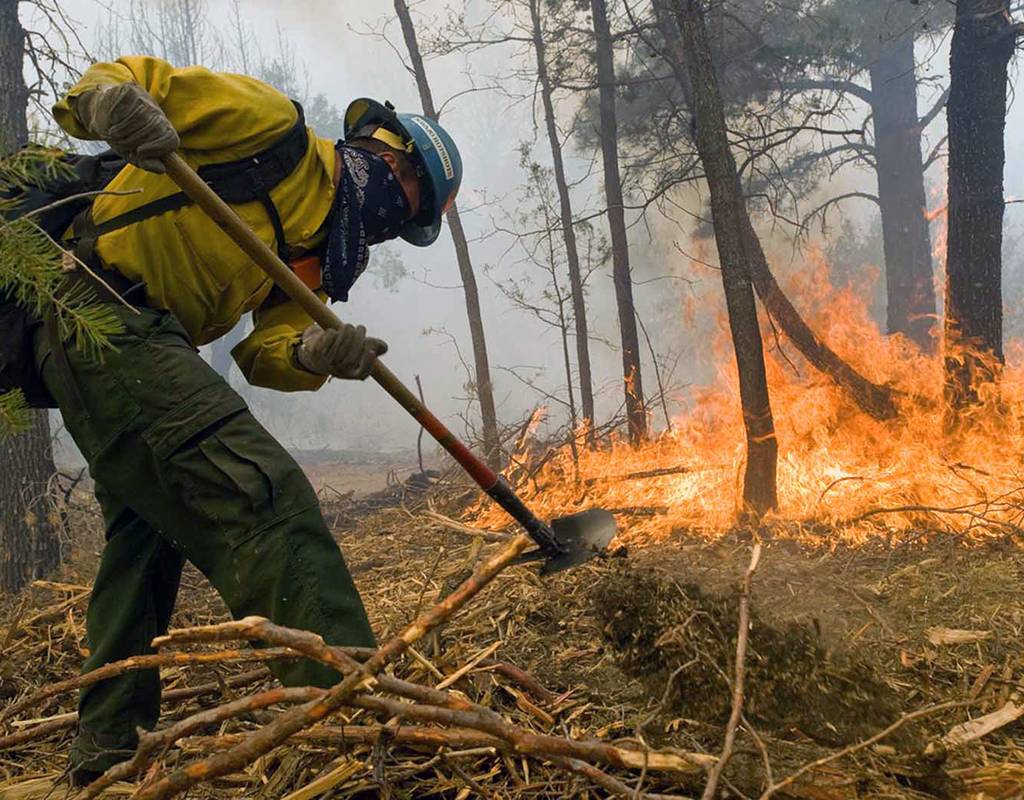
Tinderbox conditions are expected to continue throughout the summer, as North America faces one of the most challenging fire seasons on record.
In June, an anomalous and recurrent weather pattern — a massive upper-level ridge of high pressure — began to develop out west. This large mound of very warm air effectively blocked weather systems that could bring precipitation or even cooler air from the Pacific Ocean. Sinking air from the mound warmed as it was compressed at lower elevations. This was exaggerated at the surface in any area where winds blew down mountain slopes, as this further dried and heated the air.
As of mid-July, over 99 percent of the U.S. West Coast, from the Rockies to the Pacific Ocean, was in some form of drought, according to the U.S. Drought Monitor. “Extreme drought” encompasses 64 percent of this area, with nearly 28 percent being in “exceptional drought” — the most severe category. All of these values have increased through the spring into the summer. In Canada, drought continues from southern Manitoba westward into British Columbia.
As a result of the (sometimes record breaking) heat and the dry conditions, wildfires sparked in record numbers for so early in the season. As of July 20, there were 83 large (over 300-acre/120-hectare) fires active in the U.S. Thirteen states had reported large fires; almost all of these are in the West. Of these fires, only four have been declared contained. Montana alone had 20 major fires active. The active fires have burned over one million acres. So far in 2021, there have been over 35,000 fires reported in the U.S., with 2.6 million acres burned. In Canada, there were over 4,500 fires burning five million acres (2,084,000 hectares) to date. At the same time last year, the total area burned was only 483,000 acres (195,000 hectares).
To further accentuate the wildfire danger in the U.S., the National Multi-Agency Coordinating Group has elevated the national preparedness level to five — the highest level of wildland fire activity. This is the earliest the U.S. has gone to this level in the last decade. The Canadian Interagency Forest Fire Centre has also raised its preparedness level to five in response to current and expected conditions in Western Canada.
Perhaps nowhere exemplified the recent situation more than Lytton, a small town in south central British Columbia. Situated in a valley, Lytton is surrounded by mountains. Separated from the cool air coming off the Pacific Ocean, Lytton often gets very hot in the summer, especially when there are winds blowing down the mountain slopes. At the end of June, the upper-level ridge that had dominated weather further south built northward. In fact, a closed upper-level high formed almost directly over southern British Columbia. With strong downsloping winds, the heat became intense, and for three days in a row Lytton set high temperature records — not just for the town, but for Canada. On the June 29, Lytton hit 121.3F (49.6 C). This would be hot for Death Valley, nearly 1,000 miles to the south.
Ground fuels were baked dry. It probably only took a spark to set off a fire the next day. A hurried evacuation order got almost everyone out in time, but two people still lost their lives. The town was destroyed, almost 90 percent gone according to the local Member of Parliament. Although the town itself had only about 250 residents, over 1,000 Indigenous people lived in surrounding reserves that were also ravaged by the fire.
As for the rest of the summer and into the fall, the Western U.S. is forecast to have above normal temperatures. With the summer monsoon seemingly beginning in the Southwest, wildfire conditions should begin to ease there. However, below normal precipitation is predicted for the Northwest into the northern Rockies. The forecast for Canada is also worrisome. Above normal temperatures are forecast for the entire southern half of the country, and below normal precipitation is predicted for the west.
As a result of these weather conditions, “above normal” wildland fire potential is forecast in the U.S. for the mountainous areas of California, the Pacific Northwest and into the northern Rockies and High Plains for August. Conditions should improve in the interior during September, but remain problematic along the West Coast. In Canada, drought conditions and “severe wildfire” conditions will continue in August from southern Manitoba westward into British Columbia. By September, only the southernmost areas should see the greatest risk.
Typically, the peak of the wildfire season is still yet to come. Late summer into the fall is usually the worst. Cooler and wetter weather can be expected later in the fall, starting first in Canada and then working its way to the south. But even if weather conditions do improve, it seems inevitable that much of the continent will experience an extremely difficult next few months.



